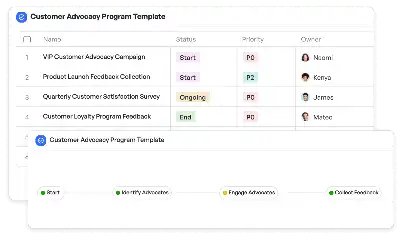AI Project Stakeholder Expectation Matrix
Achieve project success with the AI Project Stakeholder Expectation Matrix today!

What is AI Project Stakeholder Expectation Matrix?
The AI Project Stakeholder Expectation Matrix is a structured framework designed to identify, document, and align the expectations of stakeholders in AI-driven projects. In the context of AI, where projects often involve complex algorithms, data dependencies, and ethical considerations, managing stakeholder expectations becomes critical. This matrix serves as a tool to bridge the gap between technical teams and non-technical stakeholders, ensuring that all parties have a clear understanding of project goals, deliverables, and potential risks. For instance, in a scenario where an AI system is being developed for predictive analytics in healthcare, the matrix can help align the expectations of doctors, data scientists, and hospital administrators, ensuring that the final product meets both technical and practical needs.
Try this template now
Who is this AI Project Stakeholder Expectation Matrix Template for?
This template is ideal for project managers, AI developers, data scientists, and business analysts involved in AI projects. It is particularly useful for roles such as product owners, who need to ensure that the AI solution aligns with business objectives, and technical leads, who must manage the technical feasibility of the project. Additionally, it is beneficial for stakeholders like investors and end-users who need a clear understanding of the project's scope and deliverables. For example, in an AI project aimed at automating customer service, this matrix can help customer support managers, AI engineers, and company executives align their expectations and ensure a successful implementation.

Try this template now
Why use this AI Project Stakeholder Expectation Matrix?
AI projects often face unique challenges, such as managing the expectations of stakeholders who may not fully understand the technical complexities involved. This matrix addresses these challenges by providing a clear framework for expectation management. For instance, it helps identify potential risks early in the project, such as data privacy concerns or algorithmic biases, and aligns stakeholder expectations accordingly. By using this template, teams can avoid common pitfalls like scope creep or misaligned objectives, ensuring that the project stays on track and delivers value to all stakeholders. In a real-world scenario, such as developing an AI-powered recommendation system for an e-commerce platform, this matrix can help align the expectations of marketing teams, data scientists, and end-users, ensuring a seamless and effective implementation.

Try this template now
Get Started with the AI Project Stakeholder Expectation Matrix
Follow these simple steps to get started with Meegle templates:
1. Click 'Get this Free Template Now' to sign up for Meegle.
2. After signing up, you will be redirected to the AI Project Stakeholder Expectation Matrix. Click 'Use this Template' to create a version of this template in your workspace.
3. Customize the workflow and fields of the template to suit your specific needs.
4. Start using the template and experience the full potential of Meegle!
Try this template now
Free forever for teams up to 20!
The world’s #1 visualized project management tool
Powered by the next gen visual workflow engine




